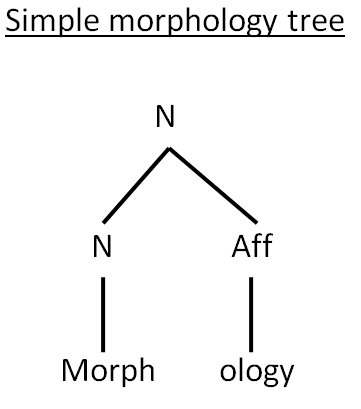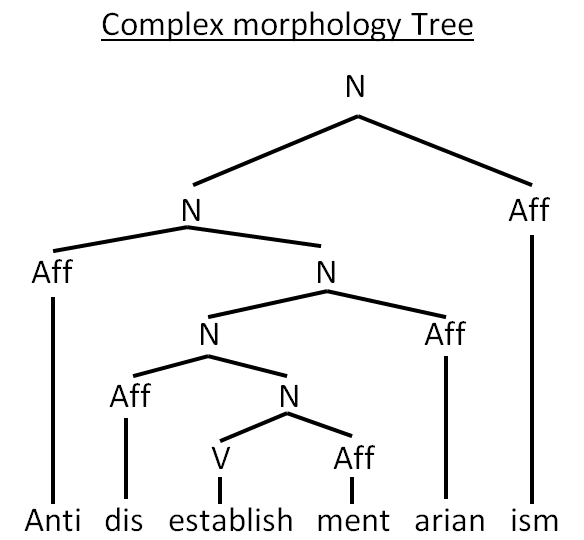Morphology – the internal structure of words

Morphology is the study of the internal structure of words and forms a core part of linguistic study today.
- The term morphology is Greek and is a makeup of morph- meaning ‘shape, form’, and -ology which means ‘the study of something’.
- Morphology as a sub-discipline of linguistics was named for the first time in 1859 by the German linguist August Schleicher who used the term for the study of the form of words.[1]
What is a word?
Smallest independent units of language
Independent:
- do not depend on other words.
- can be separated from other units
- can change position.[2]
Example:
The man looked at the horses.
- s is the plural marker, dependent on the noun horse to receive meaning
- Horses is a word: can occur in other positions or stand on its own, e.g.:
The horses looked at the man.
– What is the man looking at? – Horses.
Words are thus both independent since they can be separated from other words and move around in sentences, and the smallest units of language since they are the only units of language for which this is possible.
Morphemes – the building blocks of morphology
Words have internal structure: built of even smaller pieces
- SIMPLE WORDS: Don’t have internal structure (only consist of one morpheme), e.g. work, build, run. They can’t be split into smaller parts which carry meaning or function.
- COMPLEX WORDS: Have internal structure (consist of two or more morphemes), e.g. worker: affix -er added to the root work to form a noun.
Morphemes are the smallest meaning-bearing units of language.[3]
FREE vs BOUND MORPHEMES
Free morpheme: a simple word, consisting of one morpheme, e.g. house, work, high, chair, wrap. They are words in themselves.
Bound morpheme: morphemes that must be attached to another morpheme to receive meaning.
EG: UNKINDNESS
- UN- and -NESS are the bound morphemes, requiring the root KIND to form the word.
These are also called affixes as they are attached to the stem. There are two types as outlined below:
- Prefix (front of the base)= Un-
- Suffix (end of the base)= -ness
Drawing Morphology Trees
Below is a step-by-step guide to drawing a morphology tree:

Morphology trees show the internal structure of a word. The following video demonstrates how to draw a complex morphology tree:
Below are the completed morphology trees from the video:


References
[1] Booij, G. E., (2007). The Grammar of Words: An Introduction to Linguistic Morphology. 2nd edition. Oxford: Oxford University Press.
[2] Fasold, R. and Connor-Linton, J., (2006). An Introduction to Language and Linguistics. New York: Cambridge University Press.
[3] O’Grady, W., (1997). Contemporary Linguistics: An Introduction. London: Longman
[4] McGregor, W., (2009). Linguistics : An Introduction. London: Continuum International Publishing Group.















